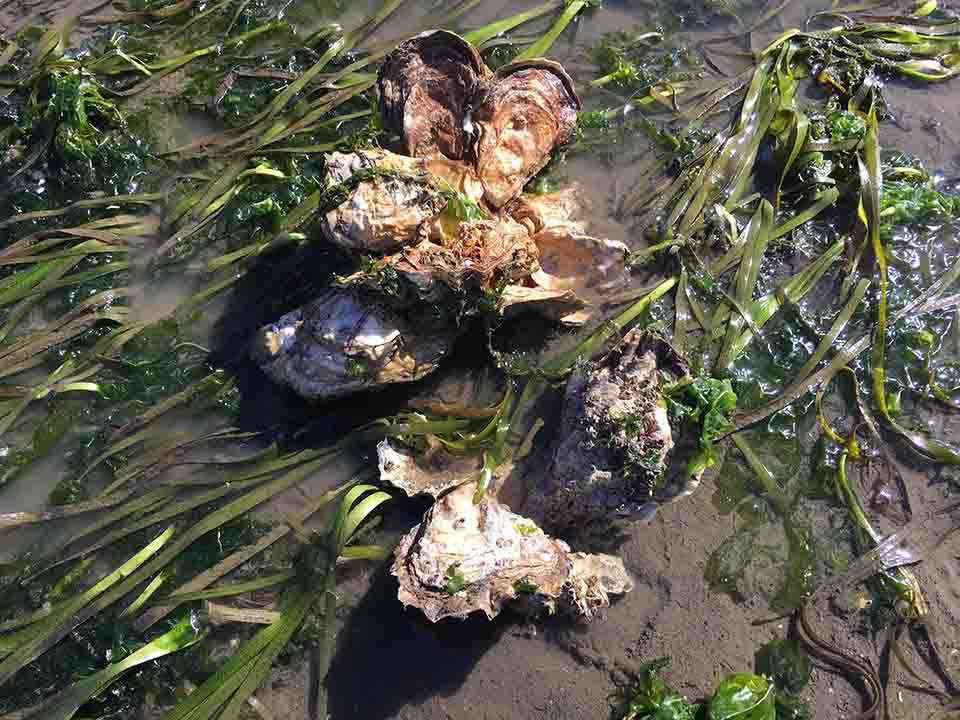The Nature Conservancy and Partners to Buy 5 Million Surplus Oysters from Shellfish Farmers Affected by COVID-19 Crisis

New program aims to support over 100 shellfish companies, save 200 critical jobs, rebuild 27 acres of imperiled native shellfish reefs.
The Nature Conservancy announced in October 2020 that it will help struggling oyster farmers impacted by COVID-19 and the economic downturn by purchasing 5 million surplus oysters and using them in nearby oyster restoration projects. The initiative is done in partnership with The Pew Charitable Trusts and in coordination with similar efforts undertaken by U.S. National Oceanic and Atmospheric Administration (NOAA) and the U.S. Dept. of Agriculture.
For the next two years, the Supporting Oyster Aquaculture and Restoration (SOAR) initiative aims to extend $2 million in payments to oyster farmers to support more than 100 shellfish companies and preserve over 200 critical jobs in northern New England, the Mid-Atlantic and Washington state. Simultaneously, over 5 million oysters will be deployed to rebuild 27 acres of imperiled native shellfish reefs across 20 restoration sites.
Jennifer Morris, TNC Chief Executive Officer, said: “This program demonstrates the potential for food producers and conservationists to work together and achieve critical outcomes for both people and nature. We are proud to partner with The Pew Charitable Trusts to provide much-needed economic relief for America’s shellfish farmers and support oyster restoration efforts. This is a win-win for environmentally-friendly businesses and ocean ecosystems.”
Robert Jones, TNC’s Global Lead for Aquaculture, said: “Ensuring the aquaculture industry endures through these challenges is in the interest of the conservation community. Our aquaculture program has built compelling evidence for the ecological contribution of shellfish farms to the surrounding environment, demonstrating that they can reduce excess nutrients in coastal waterways and provide habitat for wild finfish and crustaceans.”
COVID-19 and the resulting restaurant closures have led to a dramatic decrease in demand for farmed shellfish, leaving oyster farmers across the U.S. struggling to market their products. This lack of demand has caused a growing surplus of oysters that are becoming “oversized” for the traditional “raw bar” market. Between the loss of income since mid-March and the potential for a collapse in oyster prices due to accumulating supply, more than 3,000 jobs within the oyster aquaculture industry are under threat.
Boze Hancock, TNC Marine Restoration Scientist, said: “Working for more than 20 years at project sites across the globe, TNC & partners have demonstrated how large-scale oyster restoration and improved management can lead to long-term recovery of oyster habitats and the benefits they provide, while also offering an opportunity for communities to engage in conservation.”
In addition, the initiative will establish a $1 million Shellfish Growers Resilience Grant program with Pew, NOAA and shellfish growers’ associations as collaborating partners to address underlying challenges facing growers. The goal is to pave the way for a viable and sustainable U.S. shellfish industry that benefits the ocean and the communities which rely upon it.
Aaron Kornbluth, officer with The Pew Charitable Trusts, said: “Rebuilding wild native shellfish habitats is one of the most promising opportunities for restoring coastal ecosystems. And oysters that have grown too large to be sold to restaurants can be transplanted on nearby reefs, significantly accelerating restoration projects. We hope this initiative will lead to greater collaboration between experts who grow oysters and those who work to rebuild wild populations.”
The oyster purchase program is set to begin in October 2020 and will extend until available funding is expended. The program will initially be opened to shellfish farming companies in Maine, New Hampshire, and Massachusetts, due to the nearing winter season which will hamper farm operations and reef deployment. The program will be extended south to New York, New Jersey, Maryland, and Washington state growers, later in fall of 2020 and into winter in 2021.
Despite the many benefits they provide, oyster reefs are among the most imperiled marine habitats on Earth. Globally, over 85% of oyster reefs have disappeared due to overharvesting, introduced diseases and habitat modification.
Bob Rheault, Executive Director of the East Coast Shellfish Growers Association, said: “It is great that this program has come together at this time. The shellfish farming community has been struggling tremendously, and many folks are worrying about making it through the year. This program will allow growers to clear some over-grown product off their leases, put some needed money in their pockets, and provide environmental benefits to our coastal waters. It’s a win, win win!”